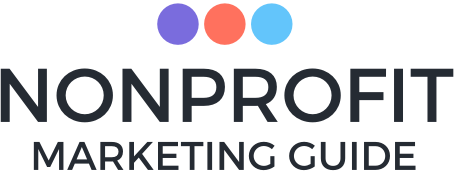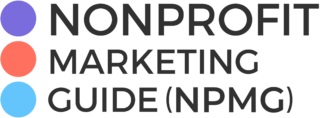I am working with two clients, ASPCApro and the Pittsburgh Park Conservancy, who are both looking at the best ways to staff what are essentially content marketing teams, even though the organizations don’t call them that.
They’ve both asked me for the list of all the roles and responsibilities that should be covered by a nonprofit marketing team that’s focusing heavily on a content –both as a strategy for delivering its programs and services and as a marketing strategy to grow and engage its community. The list I created for them has generated some good conversations within those organizations, so I thought you might find it helpful too!
Here is a PDF of the content in this post, in case that is easier for you to use.
All marketing boils down to three primary tasks: (1) understanding the people you are communicating with, (2) creating relevant and compelling messaging those people find valuable and (3) delivering that messaging to those people through a variety of communications channels.
The following roles/tasks can be prioritized, organized, and combined in many different ways depending on the size of the marketing team, skill sets of individuals, details of the marketing strategy, etc. There is no right way/wrong way.
In most nonprofits, at least three of these roles will be assigned to one person. At smaller organizations, many of these jobs simply won’t get done because the staff just aren’t there. In those cases, you have to make good choices about which roles are most important to your success.
Chief Marketing Officer or Marketing Manager –Ties all marketing activity back to organizational goals. Keeps the big picture in focus. Key point of contact for all major internal and external relationships (eyes, ears, and mouth of the marketing team as a whole). Oversees major marketing campaigns. Chief translator, navigator, and coach.
Understanding the Community (or Target Audiences)
Relationship Manager / Market Researcher — Understands the community through constant listening and feedback loops, including regular surveying and active social media use. Keeps “finger on the pulse” to maintain and build relationships long-term. Manages segmentation/targeting strategy, so you are sending “right content to the right people.”
Data Manager – Manages how the Client Relationship Management (CRM) tool (or email broadcast tool in smaller orgs) is structured and used, and how data actually gets into and out of the system.
Lead Generator / “Business Development” / List Growth Manager – Focuses on list growth tactics (e.g. email list, social media followers). Experiments to see what works best – e.g., which “content bait” leads to higher conversions from website visitors to email subscribers; watches metrics closely. Also includes search engine optimization and paid search strategies (if not included in website manager below).
Developing Compelling Messages and Content
Content Strategist – Finds the nexus between what the organization wants to communicate (internal goals, core topics) and what the community seeks (what people are most interested in). I refer to this as finding the right combination of “broccoli and cheese.” Decides which topics to focus on when (e.g. the Big Picture Communications Timeline). May oversee development of the content that the Lead Generator uses to grow the list (i.e., list bait).
Program/Service Marketers – Understands the best ways to talk about particular products and services from both the organizational perspective and the community perspective. Has deeper expertise on the program/service that your average marketing team member.
Copywriters and Editors – produces the written content, start to finish.
Graphic Designers, Illustrators, Videographers, Web Designers – produces the visual content start to finish.
Brand Manager – Ensures consistent look, style, and feel for communications and educating staff on brand.
Delivering the Content to the Community
Editorial Director, Production Manager or Managing Editor– Manages the editorial calendar or what goes out when and to whom. Responsible for ensuring good mix of original and repurposed content, and taking a multi-channel, integrated approach to sharing content with the community.
Channel Managers – Knowing and implementing best practices for writing, designing, and delivering the content given the communications channel. Also understanding “under the hood” enough to troubleshoot as needed and to track performance indicators/metrics for their channel. Sometimes you’ll see the “content creation” aspects split from the more “technical” aspects, while other times they are combined.
See specific additions below . . .
- Website/Blog Manager: Would have expertise in the content management system (CMS) of the website/blog. Could include some web development/programming expertise.
- Email Marketing Manager: Includes improving open rates and click-through rates. Would have more expertise with the Client Relationship Management / Email Service Provider (CRM/ESP) software provider.
- Social Media Manager: Includes community engagement (i.e. responding, commenting, tagging, retweeting, etc.)
- Print Marketing Manager: Includes understanding print and mail house production needs and scheduling.
- Event or Conference Marketing Manager: includes both presentations and booth/exhibition activities
- PR Manager: includes cultivating relationships with reporters and pitching stories
Feel free to add your thoughts on this list in the comments!






